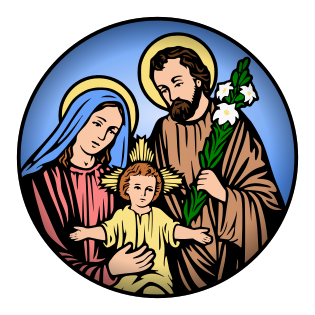William Hunt was an English painter of the mid-late 19th century. Between 1851-1853 he produced what would become his most famous work of art: The Light of the World. A depiction of his own personal conversion. The painting shows the large wooden door of a cottage located at the edge of a forest, far away from other houses or towns.It is nighttime. In the darkness, the full moon forms a halo around the head of Christ, who is standing at the door. Holding a lantern in His left hand and knocking on the door with His right. That which is most interesting in this painting has nothing to do with what you see but what you don’t see. A doorknob or handle on the outside of the door. This seems to imply that the door can only be opened from the inside. Christ is knocking on the outside, patiently waiting to bring his light into the house, but only those on the inside can let him in. As if to say that Christ patiently awaits for us to open up the door and let Him in…
There is something similar happening in the Gospel reading. Now, it was not uncommon for two invitations to be sent out for a wedding in this time period. The first was like a “save the date”, except that there was no date, it was just an announcement. The second invitation had the details – date, time, place, etc. Now the insulting piece is that they refuse the invitation even after having already known. As if to say, I heard you, I got the message, but I can’t be bothered, I’m not interested. And the king will not force them … he cannot force them.
Now, what does this mean? There is a connection here between the parable and the first reading from Isaiah … you see, in the ancient world to share a meal with others was to share life with them, it was to have communion – to be one with another. It was more than just grabbing a sandwich on your lunch break. As a priest, I get invited to places, to be with people – why? Because many people want me to be a part of their lives, to share life with them – this is the symbolism of the banquet … And to further drive home the point, Isaiah tells us that this fellowship will take place on “this mountain”. This is the second piece of this puzzle – in the ancient world, the higher up you go on earth, the closer you get to God … Thus, Isaiah’s mountain, the meal that is offered, the wedding feast of the king – all are linked to fellowship with God … It is God who invites us to share life with Him.
Faith is an invitation on the part of God our Father to be a part of His own divine life … to share in His blessings and in His mission. He invites us to have communion with Him … He stands at the doors of our hearts and knocks – patiently waiting for us to open up to Him. He waits for us, in our freedom to let Him in. You know what is sad though? How many times I have invited folks to come back to Mass, how many times I have assured people that it is safe to return to the Sacraments and have received the same refusal, the same indifference … It saddens me to see so many folks detach themselves from the Church and the sacraments … It is evident that we do not yet have a clear understanding of the reality of our worship, of Who is present among us in the Mass … You see the readings today all speak to a Eucharistic faith … to a shared meal in which we have fellowship, communion with God under the form of bread and wine. Here, really and truly, our God makes Himself present and known to us and yet still 70% of Catholics do not believe it or think its just a symbol … there is no symbolism here, there is the Real Presence of Jesus Christ in our midst. When we will learn, when we will we “see the light”? Perhaps it is time then, in the darkness of our hearts and minds to open the door for Christ to let in His light, to allow Him to bring the Light of His truth, the Light of His Goodness and mercy … the by His Divine Light He may dispel all darkness, fear and doubt – that we may see Him clearly in our midst.
